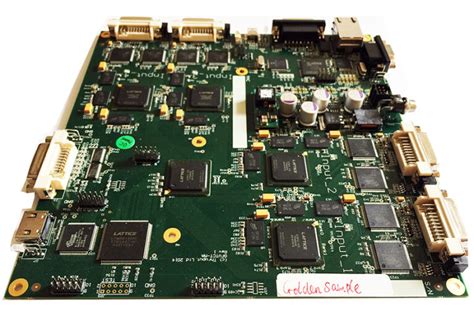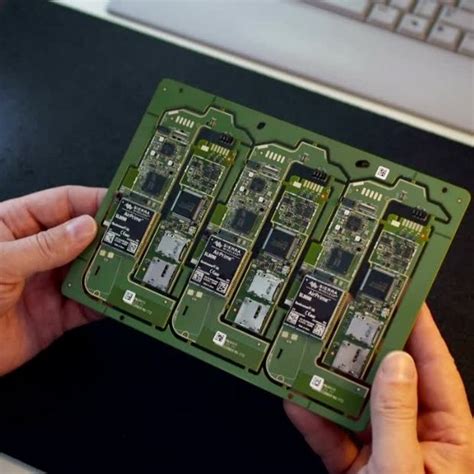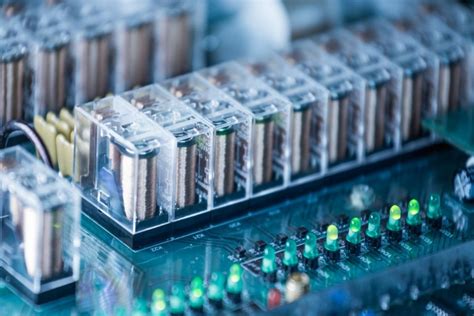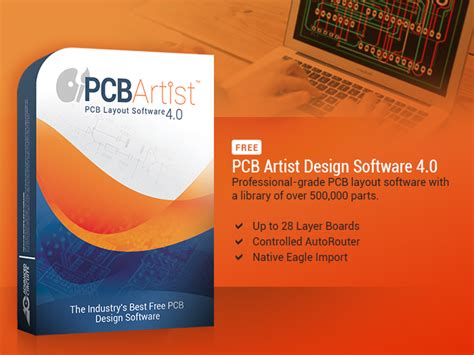Consigned PCB Assembly: Agile Manufacturing Processes
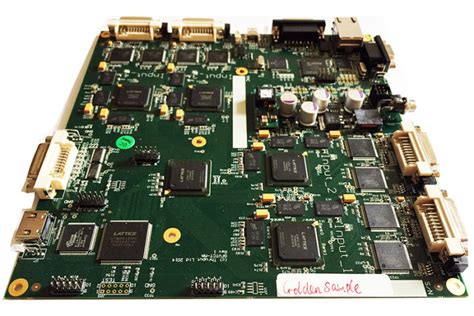
Key Takeaways
Consigned PCB assembly (PCBA) plays a pivotal role in modern manufacturing by enabling businesses to adopt agile methodologies that align with fast-paced market needs. This approach allows companies to retain control over component sourcing while outsourcing production to specialized partners, ensuring a balance between customization and operational efficiency. Key advantages include:
- Flexible processes: Adapting to unique design specifications without compromising quality.
- Rapid prototyping: Accelerating product development cycles through iterative testing and feedback.
- Streamlined production: Reducing waste and overhead costs via optimized workflows.
A critical benefit of consigned models is their ability to integrate scalable solutions, which empower manufacturers to adjust production volumes dynamically. This is particularly valuable in industries like consumer electronics or automotive, where demand fluctuations are frequent.
Tip: To maximize efficiency in consigned PCBA, establish clear communication channels with your assembly partner to align on design standards, material traceability, and quality benchmarks.
| Traditional PCB Assembly | Consigned PCBA |
|---|---|
| Fixed design requirements | Customizable workflows |
| Longer prototyping cycles | Iterative prototyping |
| Limited supply chain visibility | Direct component control |
By leveraging agile manufacturing, businesses can mitigate risks associated with supply chain disruptions, as consigned models grant direct oversight of material procurement. Additionally, advancements in automation and data-driven analytics are further enhancing the precision and speed of PCB assembly processes. As industries prioritize shorter time-to-market and higher product variability, consigned PCBA remains a cornerstone for achieving competitive resilience.
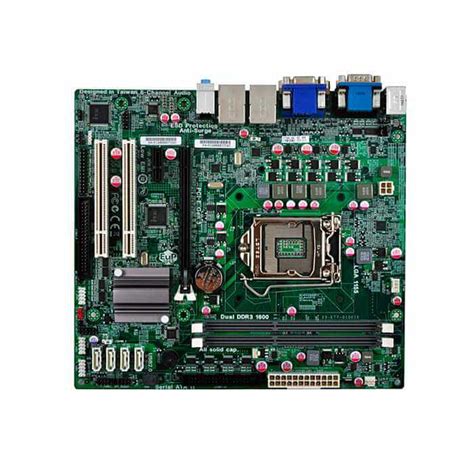
Understanding Consigned PCB Assembly in Modern Manufacturing
In today’s fast-paced manufacturing landscape, consigned PCB assembly (PCBA) has emerged as a strategic approach to meet evolving industry needs. This model involves clients supplying their own components to a manufacturing partner, who then handles the PCB assembly process, including soldering, testing, and quality assurance. By retaining ownership of critical parts, businesses gain greater control over material costs and inventory, while leveraging specialized expertise for efficient production. This method aligns seamlessly with modern demands for agile manufacturing, enabling companies to adapt quickly to design changes or market shifts without compromising timelines.
A key advantage of consigned PCBA lies in its flexibility. Manufacturers can accommodate highly customized designs, from low-volume prototypes to high-volume runs, by integrating client-provided components into standardized workflows. This adaptability reduces lead times and minimizes waste, particularly when paired with rapid prototyping techniques. For instance, iterative design adjustments can be tested and implemented swiftly, accelerating time-to-market for innovative products. Additionally, the consigned model streamlines supply chain management by decentralizing component procurement, allowing clients to mitigate risks associated with supplier delays or shortages.
The integration of advanced technologies, such as automated pick-and-place systems and real-time quality monitoring, further enhances the precision and reliability of PCB assembly in consigned setups. These tools ensure consistent output, even for complex multi-layer boards or high-density interconnects. As industries increasingly prioritize scalability and responsiveness, consigned PCBA positions businesses to meet dynamic demands while maintaining cost efficiency. By combining client-driven material control with specialized manufacturing execution, this approach underscores the shift toward collaborative, agile production frameworks in the electronics sector.
Key Benefits of Agile Manufacturing in PCB Assembly
Agile manufacturing in PCB assembly introduces transformative advantages, enabling businesses to adapt swiftly to evolving market needs while maintaining high-quality standards. One core benefit lies in its ability to accommodate custom design requirements through flexible processes. Unlike traditional models, consigned PCB assembly allows clients to retain control over critical components, ensuring tailored solutions for specialized applications. This approach minimizes material waste and optimizes resource allocation, particularly when paired with rapid prototyping capabilities. By accelerating iterative testing and design validation, teams can reduce time-to-market for new products, a critical factor in competitive industries like consumer electronics or IoT.
Another advantage is the seamless integration of PCBA workflows with scalable production systems. Agile methodologies prioritize real-time adjustments, such as shifting production volumes or modifying layouts without disrupting timelines. This flexibility is reinforced by streamlined supply chain management, where suppliers and manufacturers collaborate closely to mitigate risks like component shortages. For instance, consigned models enable just-in-time inventory practices, reducing overhead costs while ensuring component traceability.
Moreover, agile PCB assembly supports cost-efficiency by aligning production capacity with demand fluctuations. Whether scaling up for mass production or downsizing for niche markets, manufacturers can maintain operational efficiency without compromising quality. This adaptability is particularly valuable in industries requiring rapid response to regulatory changes or technological advancements. By leveraging agile frameworks, businesses not only meet dynamic industry demands but also future-proof their operations against unforeseen challenges.
Flexible Processes: Adapting to Custom Design Requirements
In consigned PCB assembly, flexible processes are pivotal for addressing the unique demands of custom electronic designs. Unlike traditional manufacturing models, where rigid workflows can limit adaptability, agile PCB assembly emphasizes collaboration between clients and manufacturers to refine PCBA specifications iteratively. This approach enables seamless integration of specialized components, advanced materials, and unconventional layouts without compromising production timelines. For instance, industries such as IoT, medical devices, and automotive systems often require tailored solutions—like high-density interconnects or mixed-technology boards—that demand precise adjustments during fabrication.
A key advantage of consigned PCB assembly lies in its ability to accommodate design changes mid-production. Manufacturers leverage modular workflows and scalable machinery to pivot quickly, whether adjusting component placements or integrating last-minute firmware updates. Advanced tools, such as automated pick-and-place systems and optical inspection technologies, ensure that even highly customized PCB assembly runs maintain consistency and quality. Additionally, the consigned model empowers clients to retain control over critical aspects like component sourcing, reducing dependency on standardized inventories and enabling cost-effective prototyping.
By prioritizing flexibility, PCBA providers can address niche requirements—such as low-volume batches or specialized thermal management—while maintaining competitive lead times. This adaptability is particularly valuable in industries where innovation cycles are rapid, and design iterations must align with evolving regulatory or performance standards. For example, a client developing a wearable health monitor might need multiple rounds of testing to optimize power efficiency, requiring manufacturers to recalibrate assembly processes efficiently.
Ultimately, the success of consigned PCB assembly hinges on balancing customization with efficiency. Agile methodologies, combined with transparent communication channels, ensure that even the most complex designs transition smoothly from prototyping to full-scale production. This flexibility not only accelerates time-to-market but also future-proofs manufacturing strategies against shifting industry demands.
Rapid Prototyping for Faster Time-to-Market
In today’s competitive electronics landscape, rapid prototyping has become a cornerstone of agile PCB assembly strategies. By leveraging consigned PCB assembly models, manufacturers accelerate product development cycles, enabling businesses to iterate designs swiftly and validate concepts before full-scale production. This approach integrates flexible processes with advanced tools like automated pick-and-place systems and precision soldering, ensuring prototypes meet exact design specifications. Time-to-market is further reduced through streamlined collaboration between designers, component suppliers, and PCBA providers, minimizing delays caused by miscommunication or material shortages.
The use of consigned materials in PCB assembly allows companies to maintain control over component quality and inventory, while outsourcing complex manufacturing steps to specialized partners. This hybrid model supports rapid design adjustments, such as swapping out incompatible parts or optimizing circuit layouts, without disrupting production timelines. Advanced software for design-for-manufacturability (DFM) analysis also plays a critical role, identifying potential flaws early and reducing rework. For instance, high-density interconnect (HDI) boards or mixed-technology designs benefit from this iterative process, as engineers can test functionality and thermal performance in real-world conditions.
Moreover, agile manufacturing in PCBA ensures prototypes transition seamlessly into mass production. By validating assembly processes during prototyping, manufacturers eliminate bottlenecks, ensuring scalability. Automated optical inspection (AOI) and in-circuit testing (ICT) are often integrated into consigned workflows, guaranteeing reliability even at the prototype stage. This alignment between prototyping and full-scale production not only cuts costs but also positions businesses to respond dynamically to shifting market demands or emerging technologies. In industries like IoT, automotive, and medical devices, where innovation cycles are relentless, consigned PCB assembly provides the adaptability needed to stay ahead.
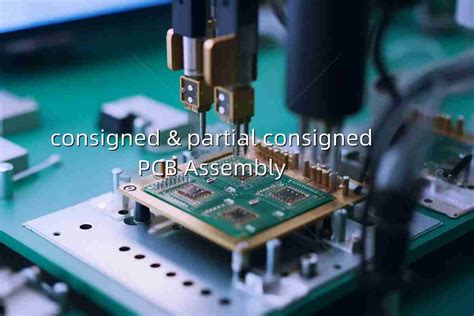
Streamlining Production Efficiency with Consigned Models
Adopting consigned PCB assembly models has become a cornerstone for manufacturers aiming to streamline production efficiency while maintaining flexibility. In this approach, clients retain ownership of critical components, which are supplied directly to the PCBA (printed circuit board assembly) partner. This model eliminates bottlenecks associated with traditional procurement, allowing manufacturers to focus on core competencies like precision assembly, testing, and quality control. By reducing inventory overhead and minimizing material waste, businesses achieve faster turnaround times and cost savings—key drivers in today’s competitive markets.
The agility of consigned PCB assembly lies in its ability to adapt to fluctuating demand. Manufacturers can scale production up or down without being constrained by component shortages or excess stock. For instance, just-in-time (JIT) inventory management aligns seamlessly with consigned models, ensuring components arrive precisely when needed. This lean approach not only cuts lead times but also enhances resource allocation, enabling factories to prioritize high-margin projects or urgent orders. Additionally, the integration of automated workflows in PCBA processes—such as automated optical inspection (AOI) and surface-mount technology (SMT)—further boosts efficiency by minimizing human error and accelerating throughput.
Moreover, consigned models foster closer collaboration between clients and assembly partners. Real-time data sharing ensures transparency in material availability, production status, and quality metrics, allowing for proactive adjustments. This synergy is particularly valuable in industries like automotive or IoT, where design iterations are frequent, and time-to-market pressures are intense. By leveraging consigned PCB assembly, companies maintain tighter control over their supply chains while capitalizing on the technical expertise of specialized PCBA providers. The result is a harmonized production ecosystem that balances speed, precision, and scalability—essential traits for meeting dynamic industry demands.
Optimizing Supply Chain Management in PCB Assembly
Effective supply chain management is critical in PCB assembly to ensure seamless production cycles and minimize operational inefficiencies. In consigned PCBA models, where clients provide components while manufacturers handle assembly, optimizing logistics becomes a cornerstone of agile manufacturing. By leveraging a client-driven inventory approach, manufacturers reduce overhead costs associated with procuring and storing parts, enabling faster response times to design changes or market fluctuations. Real-time communication between stakeholders ensures that material availability aligns with production schedules, mitigating risks like component shortages or excess stock.
Advanced tools such as IoT-enabled tracking and predictive analytics further refine supply chain visibility, allowing manufacturers to anticipate disruptions and adjust workflows dynamically. For instance, if a specific integrated circuit faces global shortages, agile PCB assembly processes can pivot to alternative components without halting production. This flexibility is particularly vital in industries like consumer electronics or automotive, where rapid iterations and strict timelines dominate.
Additionally, consigned models foster closer collaboration between designers, suppliers, and assemblers. By sharing data on material lead times, quality benchmarks, and testing protocols, teams streamline decision-making and reduce redundancies. This integration not only accelerates time-to-market but also enhances product reliability through synchronized quality checks at every stage.
Ultimately, optimizing supply chains in PCBA hinges on balancing scalability with precision. Manufacturers that adopt demand-driven planning and digitalized logistics frameworks can efficiently scale operations up or down, meeting volatile market demands while maintaining cost-effectiveness. As industries increasingly prioritize sustainability, lean supply chains in PCB assembly also contribute to reducing waste, aligning agile processes with eco-conscious manufacturing goals.
Meeting Dynamic Industry Demands Through Scalable Solutions
In today’s fast-paced electronics market, PCB assembly services must align with evolving industry requirements, where scalability is no longer optional but a strategic necessity. Consigned PCB assembly models excel in this regard by offering scalable solutions that adapt to fluctuating production volumes, design complexities, and time-sensitive deliverables. By leveraging PCBA partnerships, manufacturers gain access to agile workflows that seamlessly transition from low-volume prototyping to high-volume production without compromising quality or efficiency. This flexibility is critical for industries like automotive, IoT, and medical devices, where demand spikes and rapid iterations are commonplace.
A key advantage lies in the ability to optimize resource allocation. With consigned assembly, clients retain control over critical components while outsourcing fabrication and assembly to specialized providers. This hybrid approach minimizes overhead costs, reduces lead times, and ensures that production scales in tandem with market needs. For instance, during product launches or seasonal demand surges, PCB assembly partners can quickly ramp up capacity using modular production lines and advanced automation. Conversely, during slower periods, businesses avoid idle inventory by scaling down operations, aligning costs with actual output.
Moreover, scalable PCBA processes enhance supply chain resilience. By decentralizing production dependencies, companies mitigate risks associated with component shortages or geopolitical disruptions. Advanced data analytics and real-time monitoring further enable predictive adjustments, ensuring that manufacturing timelines and quality standards remain intact even under dynamic conditions. As industries continue to prioritize agility, consigned PCB assembly emerges as a cornerstone for sustainable growth, enabling businesses to pivot swiftly while maintaining competitiveness in an ever-changing technological landscape.
Future Trends in Agile PCB Assembly Technologies
The evolution of PCB assembly is increasingly shaped by advancements in automation, IoT integration, and AI-driven analytics, enabling agile manufacturing to reach unprecedented levels of precision and adaptability. A key trend lies in the adoption of smart factories, where PCBA processes are enhanced by real-time data exchange between machines, minimizing downtime and optimizing resource allocation. For instance, AI-powered defect detection systems are reducing error rates by analyzing solder joint quality and component placement accuracy at microscopic levels, ensuring higher yield in consigned PCB assembly models. Another emerging direction is the use of additive manufacturing techniques, such as 3D-printed circuits, which allow for rapid prototyping of complex designs while cutting material waste—a critical advantage for industries requiring swift iterations.
Additionally, the rise of modular design frameworks is empowering manufacturers to reuse standardized subassemblies across multiple projects, accelerating time-to-market without compromising customization. This aligns with the growing demand for scalable PCB assembly solutions in sectors like automotive IoT and 5G infrastructure, where product lifecycles are shrinking. Sustainability is also becoming a cornerstone of future trends, with biodegradable substrates and lead-free soldering gaining traction to meet global environmental standards. Finally, blockchain-based supply chain platforms are being integrated into PCBA workflows, enhancing traceability and reducing risks in component sourcing—a vital feature for consigned models reliant on client-provided materials. These innovations collectively reinforce the agility of modern PCB assembly, ensuring it remains responsive to ever-shifting technological and market demands.
Conclusion
In an era defined by fast-paced technological evolution, consigned PCB assembly emerges as a cornerstone of agile manufacturing, enabling businesses to navigate dynamic market demands with precision. By integrating flexible processes and rapid prototyping capabilities, this approach empowers manufacturers to adapt to custom design requirements while accelerating time-to-market. The PCBA model not only streamlines production efficiency but also fosters collaboration between design and manufacturing teams, ensuring seamless iteration and optimization. A key advantage lies in its ability to optimize supply chain management, reducing lead times and minimizing material waste through data-driven decision-making. As industries increasingly prioritize scalability, consigned PCB assembly offers a framework for balancing cost-effectiveness with high-quality output, whether for low-volume batches or large-scale production runs. Looking ahead, advancements in automation, IoT integration, and AI-driven analytics will further enhance the agility of PCBA workflows, solidifying their role in next-generation electronics manufacturing. Companies adopting these strategies today position themselves to lead in markets where adaptability and speed are critical to sustained success.
Frequently Asked Questions
What is consigned PCB assembly, and how does it support agile manufacturing?
Consigned PCB assembly (PCBA) refers to a model where the client provides components and materials to the manufacturer, who handles the assembly process. This approach enhances agility by allowing manufacturers to focus on flexible processes, adapting quickly to design changes or custom requirements without delays in sourcing components.
How does consigned PCBA improve time-to-market for new products?
By leveraging rapid prototyping capabilities, consigned models enable faster iteration cycles. Manufacturers can test and refine designs in real-time, reducing lead times and ensuring products meet dynamic industry standards. This accelerates validation and deployment, critical for competitive markets.
What are the cost benefits of a consigned assembly model?
Clients retain control over component procurement, reducing overhead costs tied to inventory management. Manufacturers optimize production efficiency by focusing on assembly quality and speed, minimizing waste. This shared responsibility streamlines costs while maintaining high-quality output.
Can consigned PCBA adapt to high-mix, low-volume production needs?
Yes. The flexible processes inherent in consigned assembly allow manufacturers to scale operations up or down seamlessly. This scalability is ideal for industries like medical devices or aerospace, where custom designs and small batches are common.
How does consigned assembly optimize supply chain management?
Clients manage their component suppliers directly, reducing dependency on a single vendor. Manufacturers integrate these pre-sourced materials into efficient production workflows, mitigating risks like component shortages. This dual-layer control enhances supply chain resilience.
What future trends are shaping agile PCB assembly technologies?
Advancements in automation, AI-driven quality checks, and IoT-enabled tracking are revolutionizing PCBA processes. These innovations support faster turnaround times, higher precision, and better alignment with evolving industry demands.
Ready to Optimize Your PCB Assembly Process?
Explore tailored consigned PCB assembly solutions that align with your project’s needs. For more details on agile manufacturing and streamlined production, please click here.

